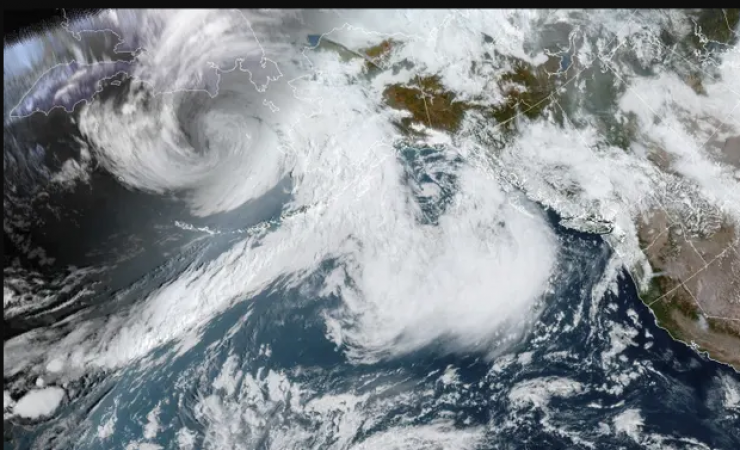
Alaska: As the remnants of a typhoon bring hurricane-force winds and strong waves toward its shores, Alaska is preparing for what forecasters believe could be its worst storm in decades.
It is predicted that the remnants of Typhoon Merbok, which is currently circling over the Bering Sea, will cause devastating flooding and destructive wind gusts from Friday night and continue through the weekend.
The National Weather Service in Fairbanks issued a warning to residents to take "immediate action" to protect themselves, predicting that the effects of this powerful storm could lead to the worst coastal flooding in 50 years and that rising waters could cause 10 cannot be less than 14 hours in some areas.
The powerful storm will intensify coastal erosion, which already threatens villages and indigenous communities.
According to meteorologist Ed Plumb, the storm will be "the deepest or strongest storm ever recorded in September" for the northern Bering Sea and "is on an ideal track to bring significant severe coastal flooding to parts of western Alaska."
Beginning Friday, the National Weather Service has issued a coastal flood warning covering areas of southwest Alaska up to the coast of the Chukchi Sea in northwest Alaska.
On Thursday, the agency issued a warning that water levels in Phnom and Golovin could rise above the normal high tide line (4 meters) by 11 feet (3.3 meters) and 13 feet, respectively. The southern Seward Peninsula coast, including Nome, was under coastal flood alert from Friday evening through Sunday morning.
Strong winds and heavy rain could submerge critical infrastructure and roads, so officials urged residents to prepare themselves and their homes. The worst weather is predicted for Friday night through Saturday night, according to AccuWeather analysts, who also noted that by Thursday the "monstrous sea" had already risen to the height of four-story buildings.
According to Mike Youman, chief hurricane warning meteorologist at AccuWeather, wind gusts are forecast between 50 and 75 mph, and they can reach 100 mph across the state's upper west coast and some Aleutian Islands. Strong winds have the ability to uproot trees, break large branches, and crush poorly constructed homes and buildings; Widespread power cuts are feared.
Although Alaskans have experience navigating severe storms, including the historic 2011 Bering Sea superstorm, which was powerful enough to tear down the roofs of buildings, topple tankers, wreck boats, and leave extensive damage in its wake, officials were in a worst-case scenario. Huh.
According to Nome Mayor John Handland on Thursday, we are aware of the drill and the areas that are commonly affected. A spokesman for Alaska's Office of Emergency Management, Jeremy Zideck, echoed his sentiments and said officials were speaking with local leaders and advising citizens to be prepared.
"We've seen storms like this in the past, like in 2011, that caused significant damage on the west coast of Alaska, and we've seen storms like this that don't cause as much damage," Zidek said. But this storm also has the potential to surpass that 2011 devastation, as such a large part of the region is at high risk.
Meerbok's arrival at the wrong time is as important as the intensity of the storm. At this time of year, the region does not have thick snow, which helps protect against the strong waves produced by storms. As there is less sea ice due to warmer waters and higher temperatures, the effects of the climate crisis are amplified.
According to the Fourth National Climate Assessment, a study by climate scientists on how climate change will affect the US, Alaska is warming twice as fast as the global average, and sea ice is disappearing at an alarming rate.
This is the most recent weather disaster to hit Alaska in recent months. More than 3.1 million acres of land have been burnt by forest fires in the state so far this season. Hot springs and summers brought on by the climate crisis have covered the tundra in vegetation.
The threat to coastal communities was highlighted in a Climate Assessment report, which found that 87 percent of Alaska's Native communities are affected by flooding and erosion.
For example, residents of the town of Yupik in Newtok have recently been forced to leave their long-time residence due to rising sea levels; This new community is still in an area that could be affected by this weekend's storm.
A new wildfire is raging in the central mountains of California
'We have been roaming around with a begging bowl for 75 years..,' confesses Pak PM
Temple became support for Flood-hit Pakistanis, 'sheltering' many Muslim families